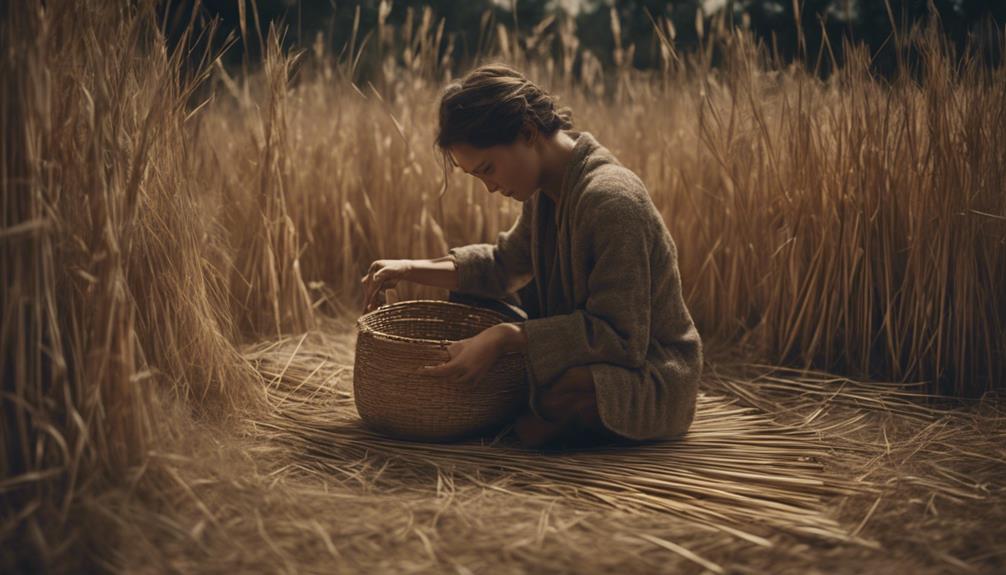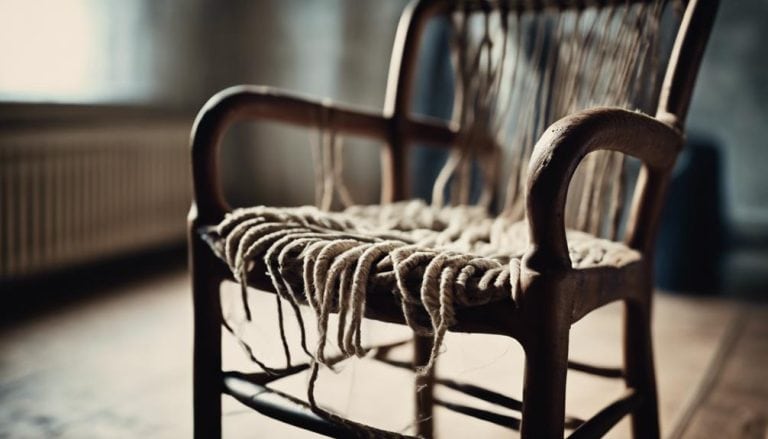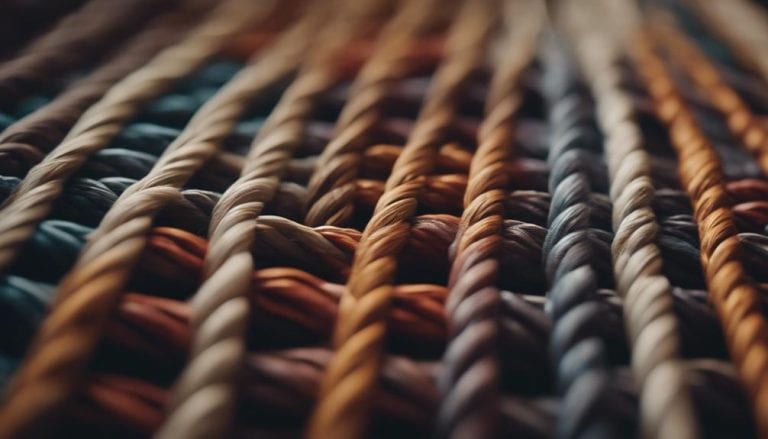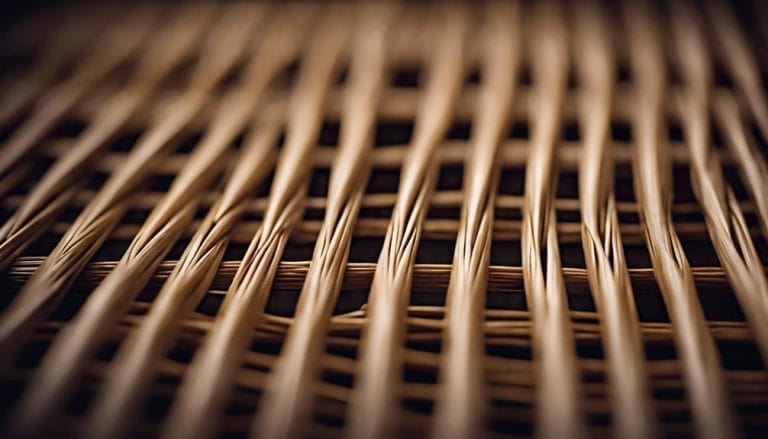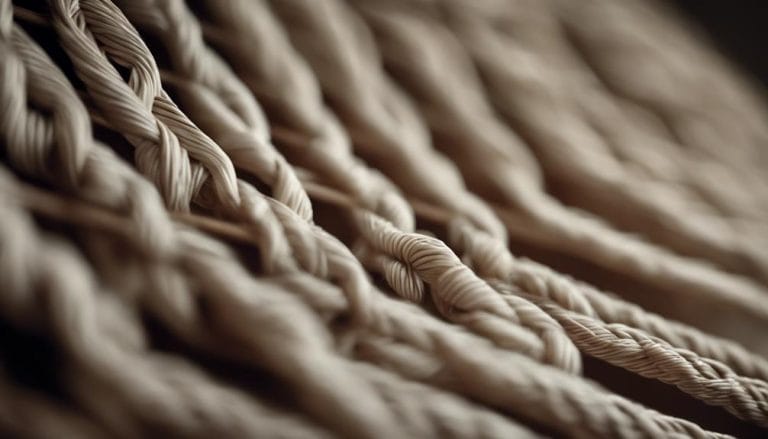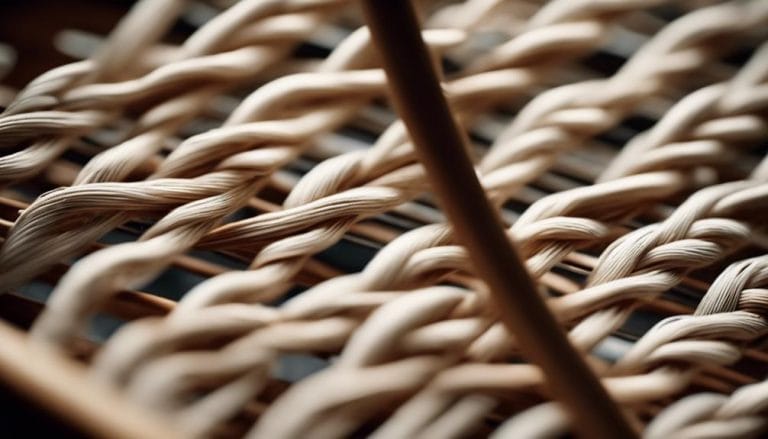How to Weave Baskets With Rush Reeds
In the day, weaving baskets with rush reeds was a skill passed down through generations. The process is both meditative and rewarding, but getting started can be overwhelming. As I walk you through the steps of selecting the right rush reeds and preparing them for weaving, you’ll uncover the secrets to creating beautiful baskets that will stand the test of time. Let’s explore the intricate art of basket weaving with rush reeds together.
To weave baskets with rush reeds, start by soaking them in water to make them pliable, then use a basic over-under weaving technique to create your basket. This traditional craft combines creativity with practicality, offering a rewarding way to make beautiful and functional items.
Key Takeaways
- Choose rush reeds strategically for different parts of the basket
- Establish a sturdy base for weaving success
- Employ tight and precise weaving techniques
- Add flair with diverse patterns, designs, and decorations
Selecting the Right Rush Reeds
When selecting rush reeds for basket weaving, it’s essential to carefully consider each type’s specific characteristics and qualities to ensure optimal strength and flexibility in the final product. Natural materials like bulrush, soft rush, and hard rush offer distinct advantages in weaving techniques. Bulrush reeds, known for their thickness and sturdiness, are excellent choices for establishing the basket’s base and structure.
Soft rush reeds, prized for their flexibility, are invaluable when intricate patterns and designs are woven into the basket, showcasing the weaver’s skill and artistry. With their dense and durable nature, hard rush reeds are indispensable for reinforcing handles and rims, ensuring longevity and strength in the finished piece.
Preparing Rush Reeds for Weaving
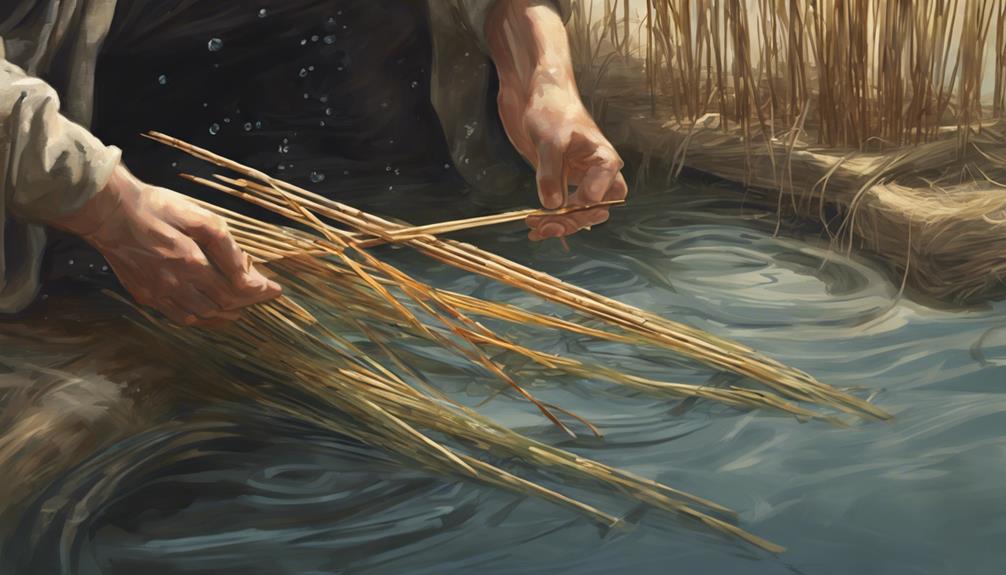
To prepare rush reeds for weaving, they must be harvested during the summer when they reach their peak strength and flexibility. The process begins by carefully selecting reeds that are long, straight, and free of blemishes. Soaking the rush reeds in warm water for a few hours before weaving is crucial, as it enhances their flexibility and makes them easier to manipulate during the basket-making process. Trimming the rough ends of the reeds with sharp scissors or a knife ensures a neat and uniform appearance in the final product.
Properly preparing rush reeds sets the foundation for creating sturdy and visually appealing baskets. The soaking improves their flexibility and primes them for weaving intricate patterns with ease. Additionally, storing the rush reeds in a cool, dry place post-harvest prevents mold growth and guarantees they remain in optimal condition for weaving. This meticulous preparation ensures that the rush reeds are ready to be transformed into beautifully crafted baskets.
Setting Up the Basket Base
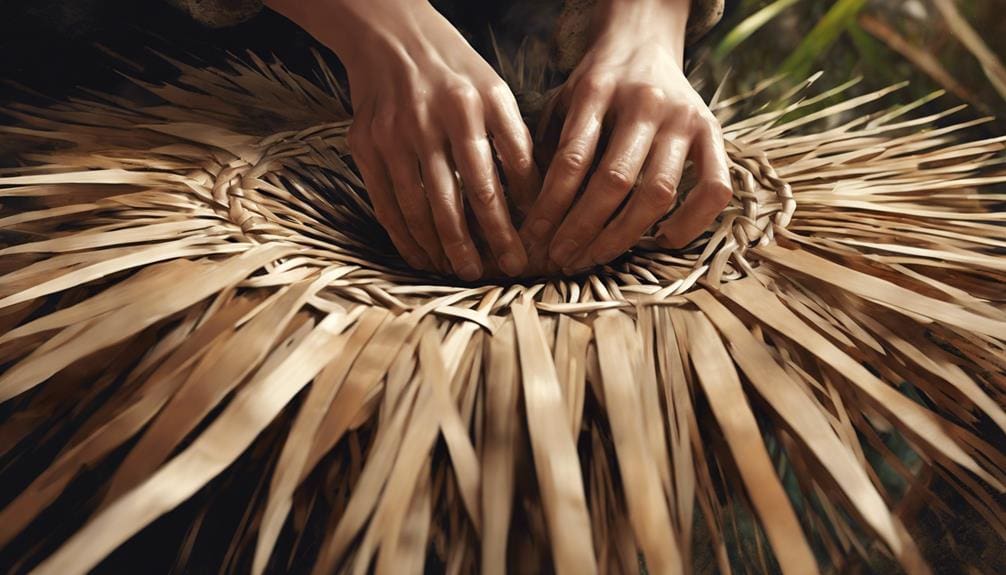
Lay out the rush reeds horizontally to establish a strong foundation for the basket base. Keeping the reeds aligned is crucial for a sturdy base. Ensure the reeds overlap slightly, creating a seamless connection supporting the basket’s weight. As a Basket Weaver, this step is pivotal to the success of the entire weaving process.
To secure the ends of the rush reeds, I recommend using a small amount of glue or tucking them under neighboring reeds. This technique will prevent any unraveling or shifting during the weaving. Attention to detail is key here. The base must be flat and even, providing a stable structure for the subsequent weaving steps.
Starting the Weaving Process
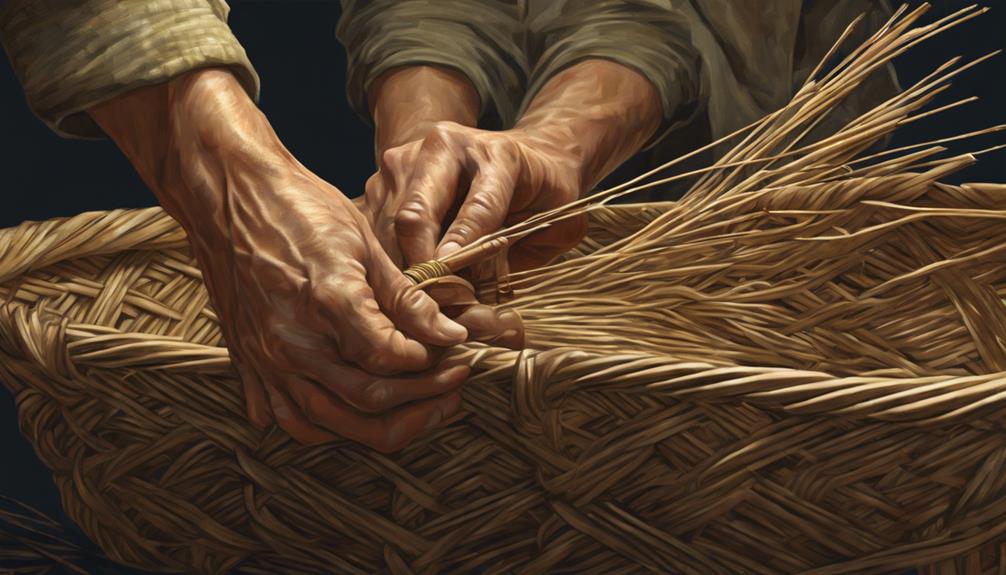
With the rush reeds in place, I deftly intertwine them at the basket’s base, ensuring a tight and secure weave to establish the foundation. As I begin weaving, each movement is deliberate and calculated to craft a sturdy and aesthetically pleasing basket.
Here’s how I start the weaving:
- Overlap the rush reeds at the base, creating a seamless connection between each strand.
- Weave the rush reeds tightly and evenly, ensuring a strong foundation for the basket.
- Employ a basic over-under weaving technique, expertly maneuvering the rush reeds into place.
- Align the rush reeds precisely, maintaining a consistent shape as the weaving progresses.
Every weave contributes to the overall strength and beauty of the basket, setting the stage for intricate designs to come. My hands move with skill and purpose, shaping the foundation that will support the artistry of the finished piece.
Creating Patterns and Designs
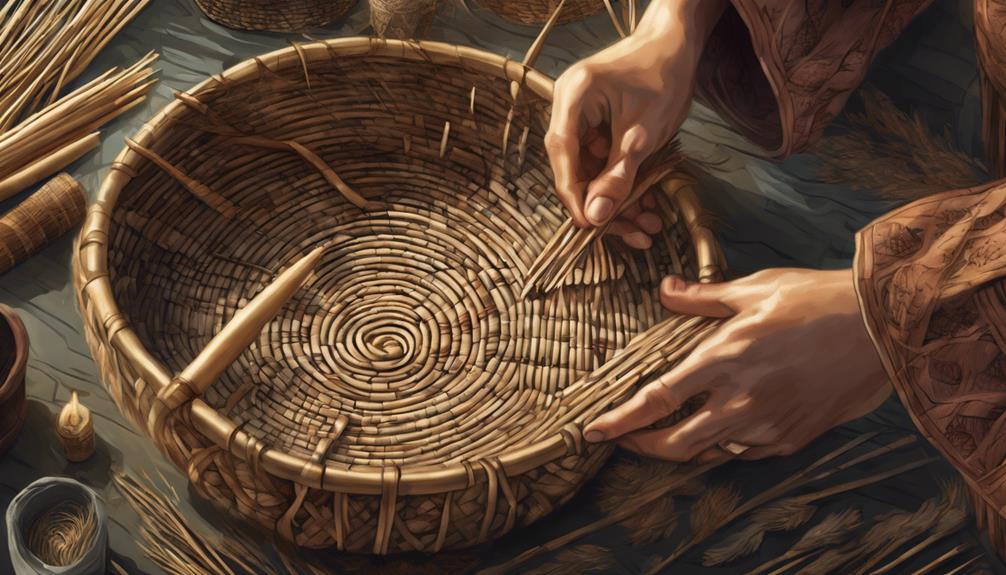
As the foundation of the rush reed basket takes shape through meticulous weaving, the next phase involves infusing intricate patterns and designs using various techniques and materials. Weaving techniques like twining, plaiting, and coiling are essential for creating visually stunning patterns in rush reed baskets. By experimenting with different colors and thicknesses of rush reeds, one can add depth and visual interest to the geometric patterns within the basket.
| Weaving Techniques | Geometric Patterns | Materials |
|---|---|---|
| Twining | Traditional designs | Rush reeds |
| Plaiting | Modern abstract patterns | Beads |
| Coiling | Cultural influences | Feathers |
Incorporating other materials like beads, feathers, or shells can elevate the design further and enhance the overall aesthetic appeal of the basket. Whether drawing inspiration from historical traditions or personal stories, the customization options are boundless. By mastering these weaving techniques and embracing geometric patterns, one can craft rush reed baskets that serve a functional purpose and stand as exquisite works of art.
Shaping and Finishing Techniques
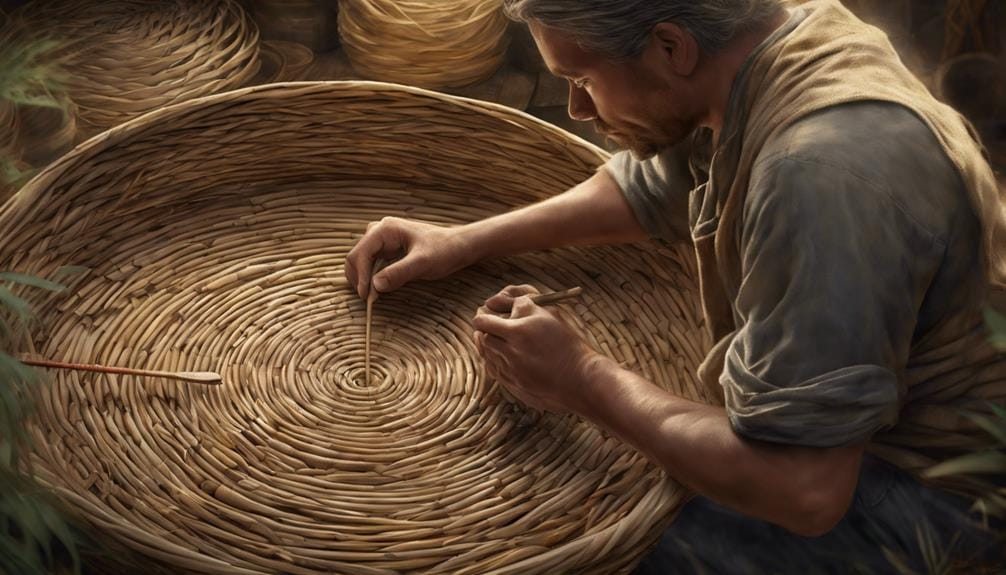
Utilizing shaping tools such as blocks or molds, I meticulously sculpt rush reeds into the desired forms for the basket, ensuring precision and structural integrity. This step is crucial in creating a sturdy and visually appealing final product.
To achieve a flawless finish, I implement the following techniques:
- Trimming: I carefully trim any excess reeds to ensure a neat and uniform appearance.
- Tucking: By neatly tucking the ends of the rush reeds, I guarantee a seamless look that enhances the basket’s aesthetic appeal.
- Securing: Properly securing the reeds with appropriate knots is essential for the basket’s structural strength and longevity.
- Decorating: As a final touch, I embellish the basket with decorative elements like beads, feathers, or ribbons, adding a touch of elegance and personal style.
Mastering these shaping and finishing techniques is paramount in rush reed basket weaving, as they contribute to the overall quality and beauty of the finished product.
Caring for and Maintaining Rush Reed Baskets
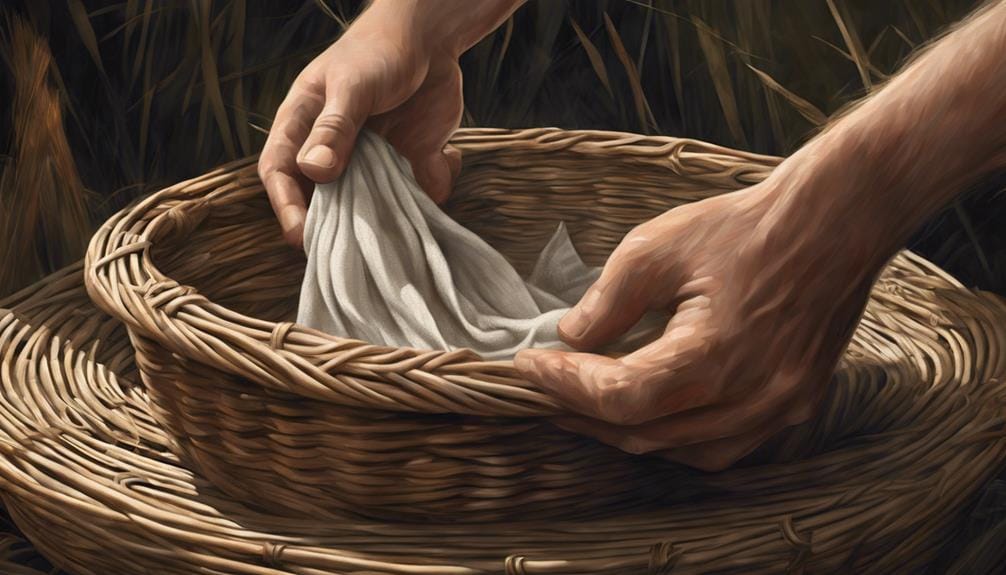
Carefully maintaining rush reed baskets is essential to preserve their quality and longevity. To ensure the longevity of your woven masterpiece, it’s crucial to weave care into every aspect of its maintenance.
Avoid exposing your rush reed baskets to direct sunlight, as this can lead to fading and discoloration over time. Additionally, keep them away from damp or humid areas to prevent the growth of mold and mildew, which can quickly deteriorate the reeds.
Regular maintenance is key. Dust your rush reed baskets regularly with a soft cloth or brush to maintain their appearance and prevent the accumulation of dirt and debris. When storing these baskets, choose a dry environment to prevent the reeds from becoming brittle and damaged.
Lastly, when cleaning your baskets, avoid using harsh chemicals that can harm the reeds. Instead, opt for a gentle wipe with a damp cloth if necessary. By following these care instructions diligently, you can ensure that your rush reed baskets remain pristine for years.
Frequently Asked Questions
How Do You Prepare Rushes for Weaving?
To properly prepare rushes for weaving, I meticulously harvest and dry them, ensuring optimal flexibility. This attention to detail enhances weaving, allowing for intricate patterns and precise craftsmanship in creating beautiful rush reed baskets.
How Long to Soak Reeds for Basket Weaving?
I soak rush reeds for the basket weaving process for 5-10 minutes in warm water. Proper material preparation is crucial for successful weaving techniques. Soaking time varies based on reed thickness. Attention to detail ensures a smooth weaving process.
Can You Make Baskets From Reeds?
Reeds can be used to craft baskets. My expertise lies in selecting top-notch reeds and mastering weaving techniques. I am also skilled at designing intricacies and choosing colors. Crafting baskets from reeds demands precision and skill.
What Are the 4 Techniques of Basket Weaving?
Utilizing coiling, plaiting, twining, and wickerwork, basketry patterns emerge with artistry. Traditional techniques intertwine natural materials into intricate designs. I master these methods precisely, crafting baskets that exude power and expertise.
Conclusion
In conclusion, weaving baskets with rush reeds is like crafting a masterpiece with nature’s paintbrush. Each reed carefully intertwined creates a beautiful tapestry of tradition and skill. With patience and dedication, you can transform simple reeds into functional works of art that not only serve a purpose but also connect you to the rich history of basket weaving. Embrace the process, and let your creativity flow like a river weaving through rush reeds.

